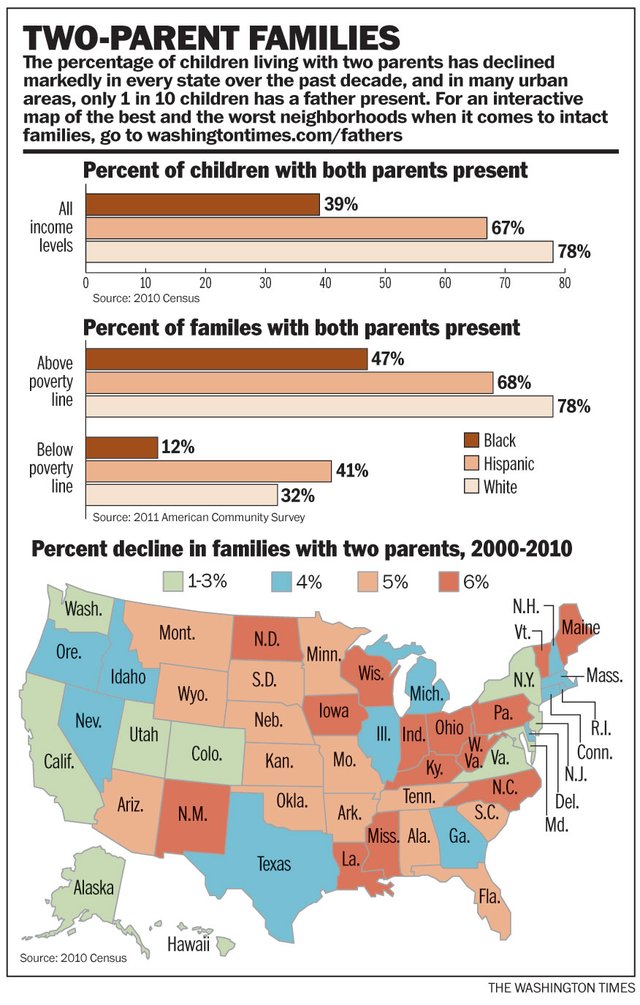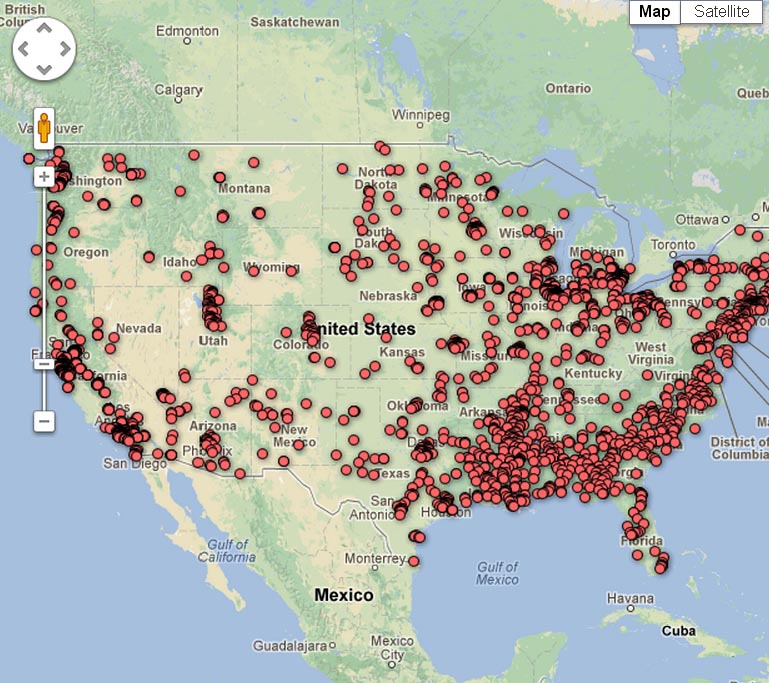Fathers Disappear from Households Across America
Washington Times, Luke Rosiak, Dec. 25, 2012
{snip}
In every state, the portion of families where children have two parents, rather than one, has dropped significantly over the past decade. Even as the country added 160,000 families with children, the number of two-parent households decreased by 1.2 million. Fifteen million U.S. children, or 1 in 3, live without a father, and nearly 5 million live without a mother. In 1960, just 11 percent of American children lived in homes without fathers.
{snip}
The spiral continues each year. Married couples with children have an average income of $80,000, compared with $24,000 for single mothers.
{snip}
The predilection among men to walk away from their babies is concentrated in the inner cities. In Baltimore, 38 percent of families have two parents, and in St. Louis the portion is 40 percent.
The near-total absence of male role models has ripped a hole the size of half the population in urban areas.
{snip}
Though income is the primary predictor, the lack of live-in fathers also is overwhelmingly a black problem, regardless of poverty status, census data show. Among blacks, nearly 5 million children, or 54 percent, live with only their mother. Twelve percent of black families below the poverty line have two parents present, compared with 41 percent of impoverished Hispanic families and 32 percent of poor white families.
The schism is most apparent in the District, which has a higher portion of two-parent families among whites, at 85 percent, and a lower share among blacks, at 25 percent, than any state.
In all but 11 states, most black children do not live with both parents. In every state, 7 in 10 white children do. In all states but Rhode Island and Massachusetts, most Hispanic children do. In Wisconsin, 77 percent of white children and 61 percent of Hispanics live with both parents, compared with more than 25 percent of black children.
{snip}
But the move toward single-parent homes has included every race, and from Curtis Bay in Baltimore to Millcreek outside Salt Lake City to Vancouver, Wash., just north of Portland, there are 1,500 neighborhoods with substantial white populations where most white households lack fathers. Maine, Vermont and West Virginia have the lowest dual-parenthood rates for whites.
The decline has hit disproportionately in the South, which considers itself a bastion of traditional family values.
Even in places where the percentage of the black population declined, single parenthood increased over the past decade, The Washington Times’ analysis of census data shows. In South Carolina, where the black share of the population fell by 2 percent, single parenthood rose by 5 percent. In Kentucky and Louisiana, where the black population was constant, single parenthood increased 6 percentage points.
The largest geographic area of sustained fatherlessness contains the rural, largely black poor across Arkansas, Mississippi and Louisiana, tributaries of broken homes running 400 miles along the Mississippi River from Memphis, Tenn., where in some neighborhoods 82 percent of children live with their mothers alone, to Baton Rouge, La., in parts of which less than one-fifth of children have both parents at home.
Black families differ from other racial groups in that the average black single mother has more children, not fewer, than her counterpart with a father present. Hispanic single mothers were most often dealing with the most mouths to feed but still had fewer children than their married counterparts.
{snip}

















